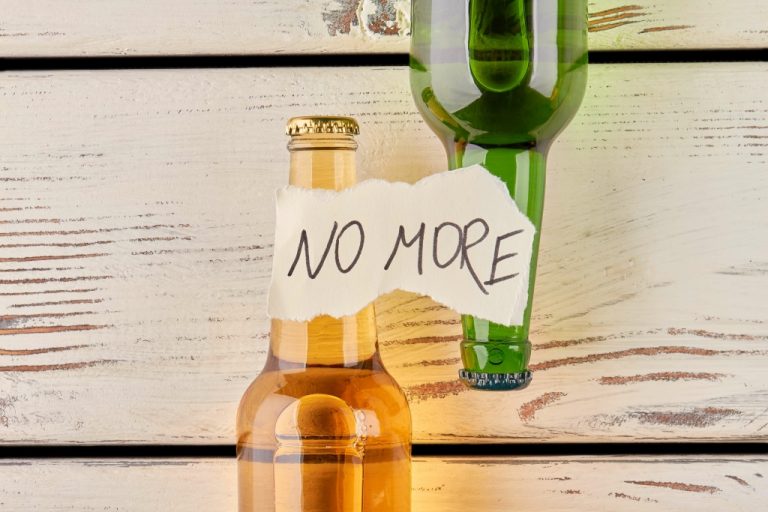Contents:
Some research has found that alcohol does not appear to worsen liver inflammation in certain people who take medication for their cholesterol. A 2006 Harvard study found that moderate alcohol use did not have a significant negative effect on the livers of men taking statins after heart surgery. It’s possible that if you use them together, antibiotics may be less effective at clearing up the infection that you are being treated for. It’s important that you don’t mix alcohol with any of the following medications. In some cases, a fatal overdose can occur if sleep aids are mixed with alcohol because both substances affect the body’s central nervous system . Older adults are also more likely to experience problems, as the ability to clear both alcohol and drugs from the body is reduced with age.
This can cause a host of unpleasant symptoms including nausea, vomiting, facial flushing, headache, breathlessness and chest pain. Similar symptoms are caused by a drug called disulfiram, sometimes used in the treatment for alcohol dependency. The idea is that the moment a patient has a drink, they experience these unpleasant symptoms, and this dissuades them from drinking more.
When in doubt, don’t consume alcohol with any medications unless your doctor or pharmacist has directly told you that it’s safe to do so. The combination of certain antibiotics and alcohol can also cause liver damage and sometimes lead to liver failure. Wash your hands regularly with soap and water for at least 20 seconds.
- In this section, you will find information and resources related to evidence-based treatment models, counseling and therapy and payment and insurance options.
- Here, we’ll discuss the potential side effects of drinking on antibiotics.
- Doxycycline is an antibiotic that’s used to treat a variety of bacterial infections, including respiratory and skin infections.
- The table below summarizes the recommendations and effects of drinking alcohol while taking different antibiotics.
It’s especially risky when the liver doesn’t work as well or when the liver is trying to process other medications and toxins at the same time. To avoid this reaction, don’t drink alcoholic beverages for at least two weeks after you stop taking linezolid. On top of that, when some antibiotics are mixed with alcohol, the reactions can be much more severe than an upset stomach. Below, we’ll talk about those severe reactions and which antibiotics to look out for. For a few seconds, let’s put antibiotics aside and focus on alcohol.
Are Rx from Canada safe?
When used under medical supervision, the combination can be an effective way to treat alcohol withdrawal. It’s important to note that this list is not exhaustive and may not include every medication you are taking. If you are not sure if you can safely drink alcohol while taking a certain medication, eco sober house rating read the label carefully and consult with a pharmacist or doctor. The effects of mixing alcohol with medication also depend on certain individual factors. For example, women can experience the effects of mixing alcohol and medications more severely than men because of differences in metabolism.
As a result, women are more susceptible to alcohol-related damage to organs such as the liver. Some medications—including many popular painkillers and cough, cold, and allergy remedies—contain more than one ingredient that can react with alcohol. Read the label on the medication bottle to find out exactly what ingredients a medicine contains. Ask your pharmacist if you have any questions about how alcohol might interact with a drug you are taking. Alcohol, like some medicines, can make you sleepy, drowsy, or lightheaded. Drinking alcohol while taking medicines can intensify these effects.
The Bottom Line: Can You Drink on Antibiotics?
Flucloxacillin is an antibiotic typically prescribed to treat skin and wound infections, chest infections like pneumonia, and bone infections. Technically, you can drink alcohol while taking this antibiotic. However, flucloxacillin can sometimes cause nausea and diarrhea, which can certainly be made worse by alcohol consumption. Over 2,800 prescription drugs are available in the United States today and health experts prescribe 14 billion of them annually. Additionally, there are around 2,000 over-the-counter medications, for which patients do not even need to see a doctor. With 70 percent of the adult population consuming alcohol occasionally and 10 percent drinking daily, some concurrent use of alcohol and prescription or over the counter medications is inevitable.
Read our editorial process to learn more about how we fact-check and keep our content accurate, reliable, and trustworthy. Muscle relaxants and alcohol both suppress your central nervous system, which controls the functions of your heart, lungs, and brain. The mixture of opiates and alcohol, for example, can cause your breathing to stop and is a common cause of death. John C. Umhau, MD, MPH, CPE is board-certified in addiction medicine and preventative medicine. For over 20 years Dr. Umhau was a senior clinical investigator at the National Institute on Alcohol Abuse and Alcoholism of the National Institutes of Health .
Over-the-Counter Pain Medications
But when you drink alcohol, no matter what else you have eaten or what other things your body is dealing with , the metabolism of alcohol takes precedence. Antibiotics are a common medication that may be prescribed for many reasons, and doxycycline is a common antibiotic. Disulfiram causes a host of symptoms from nausea and vomiting to flushing, headache, abdominal pain and general hangover symptoms.
The easiest way to lookup drug information, identify pills, check interactions and set up your own personal medication records. But even one bout of binge drinking can throw the body’s immune function off, causing a significant drop in white blood cells, which are the body’s frontline defense against infection. We provide integrated treatment for mental health disorders and addiction. Frequent alcohol intake can alter how the immune system reacts to threats, increasing the risk for potential infection-related complications. Vodka is a popular alcoholic beverage enjoyed by millions of people around the world. Its popularity is likely due to its versatility, as it can be mixed with a variety of ingredients or taken…
Antibiotics affect male and female gut microbiomes differently: Sex … – Science Daily
Antibiotics affect male and female gut microbiomes differently: Sex ….
Posted: Wed, 20 Jul 2022 07:00:00 GMT [source]
It’s not a substitute for professional medical advice, a diagnosis, or endorsement of treatment. By continuing, you agree to our privacy policy and terms of use. Normally, your liver breaks down alcohol by converting it first to acetaldehyde, which is toxic to the body, and then to acetate. Like disulfiram, the above antibiotics and antifungals cause a buildup of acetaldehyde in the body, which lead to those nasty symptoms we talked about earlier. Let’s discuss a few of the effects that can happen when you mix antibiotics and alcohol.
Harmful Interactions
If you drink heavily and regularly, be sure to let your physician know that, especially if an antibiotic is prescribed. Under those circumstances, for the drug to be effective, you may need more, or less, than the usual dose. If alcohol use is something that concerns you, and you’d like some support to help reduce your drinking, FHE Health is here to assist you. When a woman drinks, the alcohol in her bloodstream typically reaches a higher level than a man’s even if both are drinking the same amount. This is because women’s bodies generally have less water than men’s bodies. Because alcohol mixes with body water, a given amount of alcohol is more concentrated in a woman’s body than in a man’s.
Older people are also more likely to experience medication side effects in comparison to younger people, and these effects tend to get more severe with advancing age. The fact is that antibiotics have different routes of leaving the body. These medications are broken down by the liver, excreted in the urine or pass straight through the gastrointestinal system, after which they end up in the feces. The excretion route determines how long the drugs stay active in the body and how often they need to be taken. What alcohol may do in combination with antibiotics is increase the drugs’ excretion rate or slow down the rate drugs are being broken down. People should avoid drinking alcohol during treatment and up to 3 days after the last dose.

Taking the full course of antibiotics will help reduce the risk of any remaining bacteria developing resistance to the antibiotic. However, even medications that don’t require a prescription can be unsafe when mixed with alcohol. For example, OTC painkillers (including nonsteroidal anti-inflammatory drugs) can cause a range of symptoms from gastrointestinal upset to bleeding and ulcers in the stomach to tachycardia .
Nitroimidazole antimicrobials are a class of antibiotics that stop bacterial growth. This is called antibiotic resistance, and it’s a very serious global health problem. Finally, I’ll tell you when it’s best to talk with your doctor or another healthcare professional. It depends on the antibiotic, the specific side effects of that antibiotic and the individual, but side effects of antibiotics have been known to last for several weeks.
But if you’re taking doxycycline and don’t have these risks, you should be fine to have a drink or two without reducing the effectiveness of the antibiotic. The FHE Health team is committed to providing accurate information that adheres to the highest standards of writing. This is part of our ongoing commitment to ensure FHE Health is trusted as a leader in mental health and https://sober-home.org/ addiction care. Alcohol can affect the efficacy of some antibiotics, but that is not true of all of them. In 2019, more than 250 million antibiotic prescriptions were written and filled in the United States alone. It’s important for patients and health care professionals to do everything they can to keep the antibiotics currently in use effective for as long as possible.
On its own, even a few glasses of alcohol can make it easier for you to get sick and harder for you to get well. Alcohol changes your blood sugar levels, which can slow healing and recovery time. Long-term, alcohol eco sober house weakens your immune system and may increase your risk of developing another infection. Have you ever called a pharmacist to confirm whether it’s really a bad idea to take alcohol and antibiotics together?



